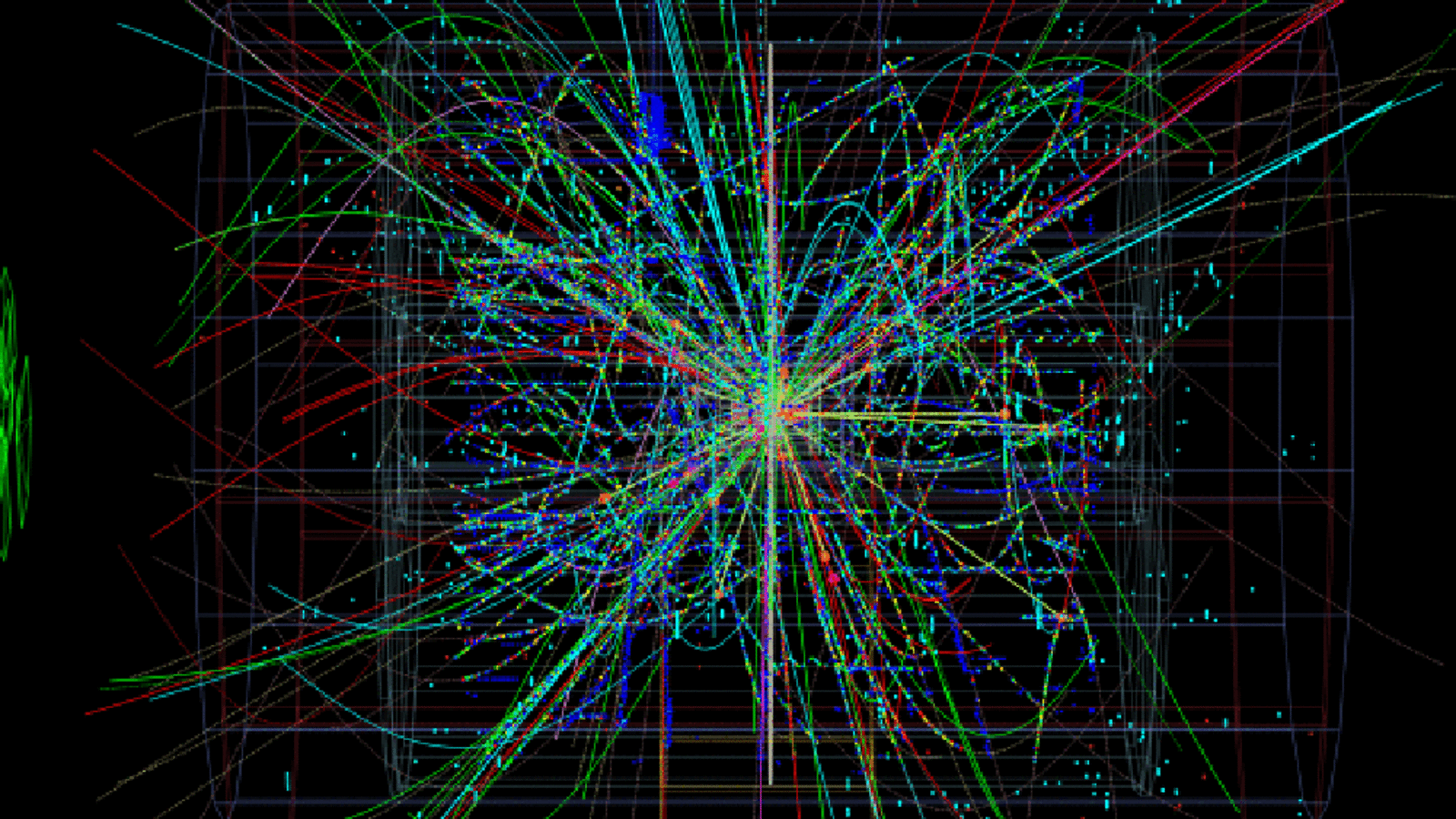For most of the year, two beams of protons run the collision course around the Large Hadron Collider. Scientists take a short break from protons in winter to collide much heavier lead ions.
In a test on Thursday, scientists collided the two types of particles together for the first time. The feat will allow physicists to better understand the conditions of the universe just after the big bang.
LHC scientists collide lead ions to create quark-gluon plasma, a hot, dense soup of quarks that are free-floating instead of being bound into particles. They study the plasma’s properties by examining the high-energy particles that emerge from collisions that produce it.
Early next year scientists will smash protons with lead ions to better understand results obtained from the lead-lead collisions. Proton-lead collisions are similar to lead-lead collisions, but they have lower energy and therefore do not produce quark-gluon plasma. Colliding protons with lead ions will help scientists determine which effects of the collisions come from the presence of lead ions and which ones come from the presence of the plasma.
“We are all very excited that it worked so quickly,” accelerator physicist John Jowett said. “This is something very new for the LHC.”
Colliding protons with lead ions was a new challenge for the CERN teams. The two LHC beam pipes are usually filled with beams composed of identical types of particles, which are accelerated to an identical energy before colliding. Colliding lead ions with protons is unusual because lead ions have very different mass and charge than protons. Both are subject to the forces of the same magnets that surround the LHC beam pipes, so their energies and frequencies of revolution around the ring are unequal. To correct the differences, the radiofrequency cavities the beams pass through are tuned to different frequencies for each of the beams.
“It’s an old problem, worrying how the two beams interact with one another,” Jowett said. “But when they revolve at different rates during injection and energy ramping, the situation is quite different.”
The first collision occurred Thursday morning at 1:26 a.m. CEST. Along with being the first lead-proton collision, it was the first time two different types of particles were collided in a collider whose two rings are not independent. The Relativistic Heavy Ion Collider at Brookhaven, which is composed of two independent rings, has collided gold and deuterons in recent years. The first non-symmetric collisions in a collider with two rings occurred at CERN’s Intersecting Storage Rings, which were in operation until 1984.
CERN’s accelerator physicists have been considering proton-lead collisions since 2005. Tests started at the LHC last year when teams began to experiment with injecting the particles into the LHC. LHC scientists expect proton-lead runs will replace lead-lead runs roughly every three years until 2022.



